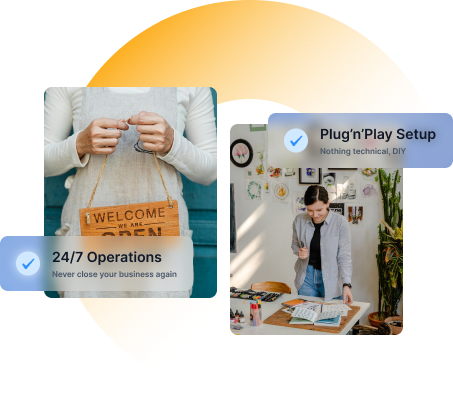Integrating ChatGPT into a website can enhance user experience by providing instant support, answering queries, and improving engagement. Here’s a detailed guide on how to integrate ChatGPT with your website effectively:
Step 1: Define Use Cases
Before integrating ChatGPT, determine how it will be used on your website. Common use cases include:
- Customer Support: Answering frequently asked questions.
- Lead Generation: Capturing user information for follow-ups.
- Content Recommendations: Suggesting relevant articles or products based on user inquiries.
- Interactive Experiences: Providing quizzes, games, or conversational flows.
Step 2: Use Pre-Built Chatbot Platforms
If you’re looking for a way to integrate ChatGPT into your website without writing code, several pre-built chatbot platforms can facilitate this process. These platforms offer user-friendly interfaces, allowing you to customize and deploy a chatbot with ChatGPT capabilities quickly.
- Chatbot Platforms:
- ManyChat: Primarily for social media, ManyChat supports integration with ChatGPT for websites, enabling automated responses and interactions without coding.
- Tidio: Tidio combines live chat and AI-powered chatbots, allowing easy integration of ChatGPT. You can customize responses and automate FAQs with a simple drag-and-drop interface.
- Landbot: Landbot provides a no-code platform for building chatbots that can integrate with ChatGPT. Its visual builder allows you to design conversational flows easily.
- Chatfuel: A popular platform for creating chatbots without coding, Chatfuel enables integration with ChatGPT to enhance user interaction on your website.
- Botbrain.co: This platform specializes in creating chatbots for websites, allowing you to integrate ChatGPT easily. Botbrain.co offers customizable templates and an intuitive interface, enabling you to create a tailored chatbot experience for your users without any coding.
- How to Set Up:
- Sign Up: Create an account on your chosen chatbot platform.
- Choose a Template: Most platforms offer templates for different use cases (e.g., customer support, lead generation). Select a template that fits your needs.
- Connect ChatGPT: Many platforms have built-in options to connect to ChatGPT. You’ll typically need to enter your OpenAI API key.
- Customize Conversations: Use the visual interface to customize the conversation flows, responses, and user prompts.
- Integrate with Your Website: Most platforms provide an easy way to generate a code snippet or plugin that you can embed on your website. This usually involves copying and pasting a script into your website’s HTML.
- Benefits of Using Pre-Built Platforms:
- No Coding Required: You can set up and customize a chatbot without any programming skills.
- Quick Deployment: Pre-built platforms streamline the process, allowing you to launch your chatbot quickly.
- Customization Options: Many platforms offer drag-and-drop builders and customizable templates, so you can create a unique user experience tailored to your brand.
- Analytics and Insights: These platforms often come with built-in analytics tools, enabling you to monitor chatbot performance and user interactions easily.
- Example of Integration:
- Using Tidio:
- Sign up for a Tidio account.
- Choose the ChatGPT integration option in the settings.
- Enter your OpenAI API key to connect.
- Customize the bot responses and design your chatbot’s appearance.
- Generate the integration code and embed it on your website.
- Using Botbrain.co:
- Sign up for a Botbrain.co account.
- Select a chatbot template that meets your needs.
- Customize the chatbot’s conversation flows and design.
- Connect the ChatGPT integration by entering your OpenAI API key.
- Get the embed code and add it to your website.
- Using Tidio:
Conclusion
Using pre-built chatbot platforms to integrate ChatGPT into your website is a user-friendly and efficient method. By leveraging these tools, you can enhance user interaction without the need for coding, making it accessible to anyone looking to implement AI-powered chat functionality. This approach allows you to focus on optimizing user experience while the platform handles the technical aspects of integration.


